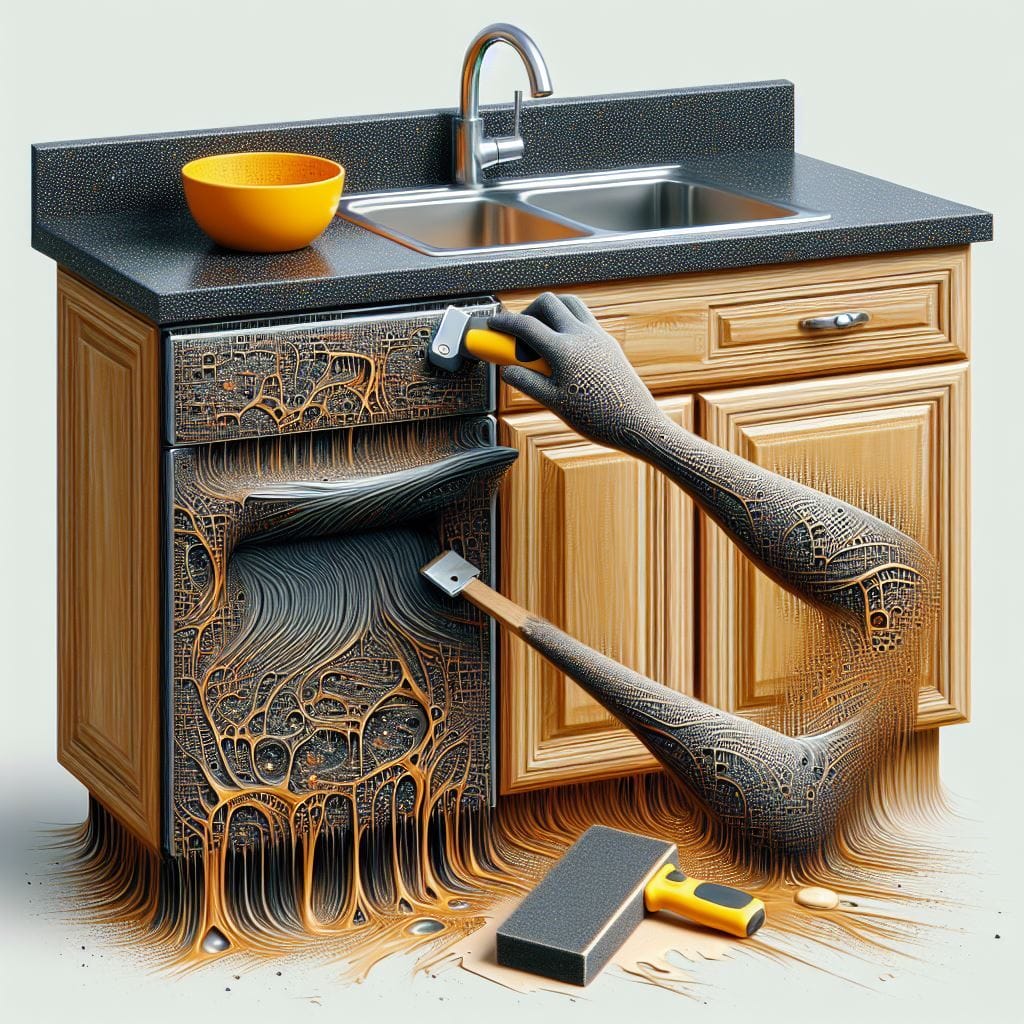
Are you tired of the thick, stubborn layers of paint on your kitchen cabinets? Whether you’re renovating your kitchen or simply seeking to refresh the look of your cabinets, knowing how to effectively remove thick paint is essential.
Over time, paint can accumulate and become challenging to remove, but fear not! In this guide, we’ll walk you through the step-by-step process of removing thick paint from your kitchen cabinets and restoring them to their former glory.
Say goodbye to unsightly paint buildup and hello to beautifully refreshed cabinets! Let’s dive into the solution for “How To Remove Thick Paint From Kitchen Cabinets.”
Contents
- 1 What Is The Best Way To Remove Thick Paint? How To Remove Paint From Kitchen Cabinets?
- 2 How Do You Remove Dried Paint From Wood Cabinets?
- 3 Is it better to strip or sand kitchen cabinets?
- 4 How To Keep Painted Kitchen Cabinets From Chipping:
- 5 CONCLUSION: How To Remove Thick Paint From Kitchen Cabinets
What Is The Best Way To Remove Thick Paint? How To Remove Paint From Kitchen Cabinets?
Heat guns provide an excellent solution for tackling the task of stripping multiple layers of old paint.
By applying heat, the gun effectively softens the paint, leading it to bubble and blister.
As a result, the paint becomes highly manageable and can be effortlessly scraped off using a metal scraper.
How Do You Remove Dried Paint From Wood Cabinets?
“Utilize a plastic-edged spatula or the edge of a bank card to attempt to remove the spill,” advises Pam Estabrooke, proprietor of Brooke Home Painting in Braselton, GA.
Katharine McMillan, the writer of “Home Decorating for Beginners,” favors the blunt blade of a versatile 5-in-1 tool but mentions you can opt for your preferred choice.
“Even a table knife would suffice—aim for a blunt edge to prevent harm to the wood surface beneath the spill,” McMillan adds.
Regardless of the tool selected, proceed with caution and patience.
Following this, employ a moist cloth over the dried paint.
If scraping proves ineffective, attempt to rub the paint’s surface gently with a damp—not soaked!—cloth.
“The moisture might soften the paint sufficiently to facilitate removal,” suggests Estabrooke.
If plain water fails, consider using a mild cleanser. Estabrooke and McMillan propose options like Simple Green, Mrs. Meyers, or Murphy Oil Soap.
“Essentially, any non-solvent-based cleanser should aid in the process,” notes Estabrooke. However, it’s essential to recognize that water or a soap-and-water mixture will not assist in softening oil-based paint splatters.
For oil-based paint, proceed to step three below.
Tip: To discern whether an old drip is from latex or oil paint, rub a cotton ball moistened with denatured alcohol over the drip. If the color transfers onto the cotton ball, it’s latex.
Hit the dried paint with a little heat:
To tackle stubborn dried paint, consider using a hairdryer set on high heat or a heat gun if available.
However, caution is advised with heat guns to avoid creating a bigger mess, especially for extensive spills.
If scraping and heating fails to remove all traces of paint, employing a solvent becomes necessary.
For dried latex paint, denatured alcohol or products like Goof-Off from hardware stores can be effective.
Apply the solvent using a microfiber rag with gentle rubbing motions to avoid damaging the wood finish.
In case of any imperfections caused by the process, consider using tinted wood wax or a furniture scratch-hiding marker to touch up.
For oil-based drips, consulting a local paint store for the appropriate solvent and removal technique is recommended.
Is it better to strip or sand kitchen cabinets?
Sanding proves to be the optimal choice when preparing cabinets for painting since it effectively eliminates any previous coatings.
On the other hand, if you’re dealing with minor scratches and imperfections, stripping emerges as the preferred technique.
This process entails using a chemical solution to eliminate the existing finish from the surface of the cabinet.
Long-term board care is crucial for maintaining a safe and hygienic kitchen environment. Regular cleaning and proper storage techniques can extend the lifespan of your plastic cutting boards, ensuring they remain effective and free from contamination.
How To Keep Painted Kitchen Cabinets From Chipping:
The unexpected sight of our freshly painted cabinets chipping and peeling was certainly not part of the renovation plan.
Almost immediately after completing the kitchen makeover, we noticed paint missing around the cabinet knobs and strips of it gone where the cabinet doors close.
Additionally, dings and scratches seem to appear with every clumsy moment, making it feel like a disappointing “Pinterest fail” instead of the desired outcome.
However, don’t despair! It’s a common issue for painted cabinets to chip and peel, but there are already solutions available to ensure the paint maintains a durable finish.
If your kitchen cabinets are experiencing peeling or the paint easily scratches off, you just need to perform some touch-ups using the appropriate products and techniques.
CONCLUSION: How To Remove Thick Paint From Kitchen Cabinets
In conclusion, removing thick paint from kitchen cabinets requires patience, the right tools, and proper technique.
Heat guns are effective for softening multiple layers of old paint, making it easier to scrape off.
For dried paint, using a plastic-edged spatula or a 5-in-1 tool can help remove the spill, followed by gentle rubbing with a damp cloth or mild cleanser.
Heating the dried paint with a hairdryer or heat gun may also aid in removal.
If necessary, solvents like denatured alcohol can be used, but caution is advised to avoid damaging the wood finish.
Sanding is recommended for preparing cabinets for painting, while stripping is preferred for minor imperfections.
To prevent chipping and peeling of painted cabinets, touch-ups using appropriate products and techniques are essential.
Overall, by following these steps carefully, you can successfully remove thick paint from kitchen cabinets and maintain a durable finish for years to come.